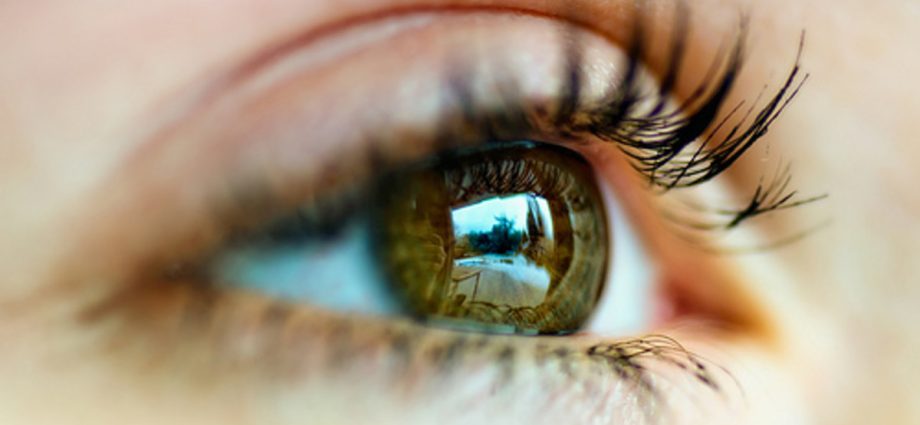Contents
Cataracts – one of the most common causes of extreme visual impairment, and even loss of vision. Unfortunately, many people, noticing their first visual disturbances, delay visiting a doctor. Find out why some specific symptoms should not be underestimated and what untreated cataracts can lead to.
Cataracts – you need to know about it
A cataract is a disease in which the lens becomes cloudy, and as a result, less and less light reaches the eye. It is most often associated with the aging of the body (mainly affects people over 60), but it can also occur as a complication of certain diseases (e.g. diabetes), as a result of eye injury, uveitis and the use of certain medications.
While the exact cause is unknown, there are many factors that can contribute to the development of cataracts. They include:
- Family history of cataracts
- Smoking tobacco
- Obesity
- Consume significant alcohol consumption
- Certain medical conditions such as diabetes, high blood pressure, and high myopia
- Long-term exposure to ultraviolet radiation
- Previous eye injury, inflammation, or surgery
- The use of steroids, statins, hormone replacement therapy
While there is no way to prevent cataracts, you can delay its onset by wearing sunglasses with UV protection, eating healthy, quitting smoking, and remembering to have regular eye care visits. [1]
Cataract symptoms visible to the naked eye – don’t miss them
The first symptoms of cataracts are, unfortunately, often underestimated by patients, regarded as simply deteriorating eyesight “from old age” or fatigue. As cataracts progress and the lens becomes cloudy, symptoms become more noticeable. Initially, you can observe deterioration of distance vision, better vision on cloudy days, problems with distinguishing colors and vision “as if in front of a foggy window”.
People with cataracts also complain about the need to change glasses frequently, difficulty reading, seeing dark spots, halo around lights or blurring the objects they are viewing. Moreover, if the lesions on the lens are located centrally, they can result in seeing many images simultaneously. Other symptoms that should make us visit an ophthalmologist include: excessive tearing, itching and faster eye fatigue. [2]
Do not wait for nightfall – what can untreated cataracts lead to?
First of all, an untreated cataract, regardless of its cause, at a critical stage of advancement may even lead to complete loss of vision, commonly regarded as the most important of the senses. Good eyesight allows seniors to function independently, participate in social life, gainful employment, and support the family, e.g. in caring for young children. Cataracts often appear also in professionally active people, causing significant difficulties in the performance of daily duties.
A person with an untreated, advanced cataract over time may therefore need care from a loved one. The cataract then becomes a challenge for the whole family, both mentally and physically. Estimated time spent by the caregiver to help patients over 70 years of age. with impaired vision is up to 17 hours a week.
Moreover, as shown in a recent study published in JAMA Internal Medicine, cataract surgery reduces the risk of dementia in seniors. Participants who took part in the study and had their cataracts removed were as much as 30 percent. less likely to develop dementia compared to participants who did not undergo this surgery. The authors of the study indicate that it may be related to better quality of sensory stimuli received by patients, as well as more and better quality of incoming light. [3]
A rare but possible complication of untreated cataracts is also called an acute attack of glaucoma as a consequence of, inter alia, increasing lens size and increasing intraocular pressure. This condition is manifested by nausea, vomiting, eye pain, headache and requires immediate treatment in the emergency ophthalmology department. [4]
So do not wait to see an ophthalmologist until the symptoms worsen and the disease is at an advanced stage. Once, 40 years ago, it was said that cataracts must “mature” for surgery – this is completely untrue. In fact, it is the advanced cataract that is more difficult to operate and is associated with a higher risk of postoperative complications. Experts emphasize that cataracts should be operated as soon as possible as soon as it begins to interfere with everyday functioning.
Do not delay the operation – what is the treatment of cataracts?
The only recognized and effective method of cataract treatment is a surgical procedure, which consists in removing the cloudy lens and replacing it with an artificial intraocular lens with appropriately selected optical parameters. Patients often postpone the decision to undergo cataract surgery for various reasons – they are afraid of pain, complications, the hospital stay itself.
In fact, cataract surgery is the most common surgery in the world, performed in a day-to-day surgery mode, with a very low risk of complications. Only in Poland, three thousand such operations are performed annually per million inhabitants. [6] The entire procedure takes 20-30 minutes or even less and is completely painless because it is performed under local anesthesia. The improvement of vision is noticeable after a dozen or so hours and what is more, the current level of surgical techniques allows even to obtain after cataract surgery the quality of vision, often better than before the development of the disease and the clouding of the lens.
In Poland, cataract surgery can be performed free of charge under the National Health Fund, or with full payment (privately). A private procedure makes it possible to use an advanced intraocular lens, e.g. a trifocal or non-diffractive lens, with an extended depth of field, thus minimizing or completely eliminating the need to wear glasses after the procedure. Don’t wait for the cataract to take your eyesight – remember to see an ophthalmologist every year, and if you get sick – start treatment immediately.
PL-CAT-2200021










